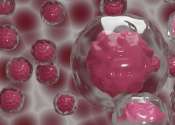Team demonstrates fabrication method to construct 3D structures that mimic bone microstructure
Scientists have combined laser 3D printing technology and an alternate soaking process to construct complex 3D structures that mimic bone microstructure. This is the first demonstration of this fabrication method, and it ...









